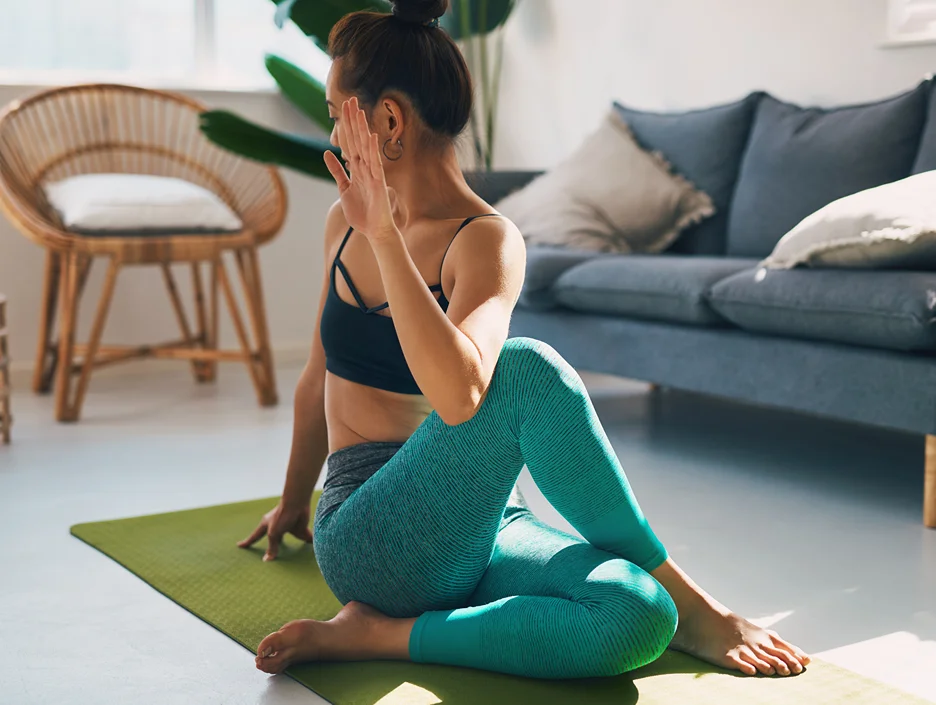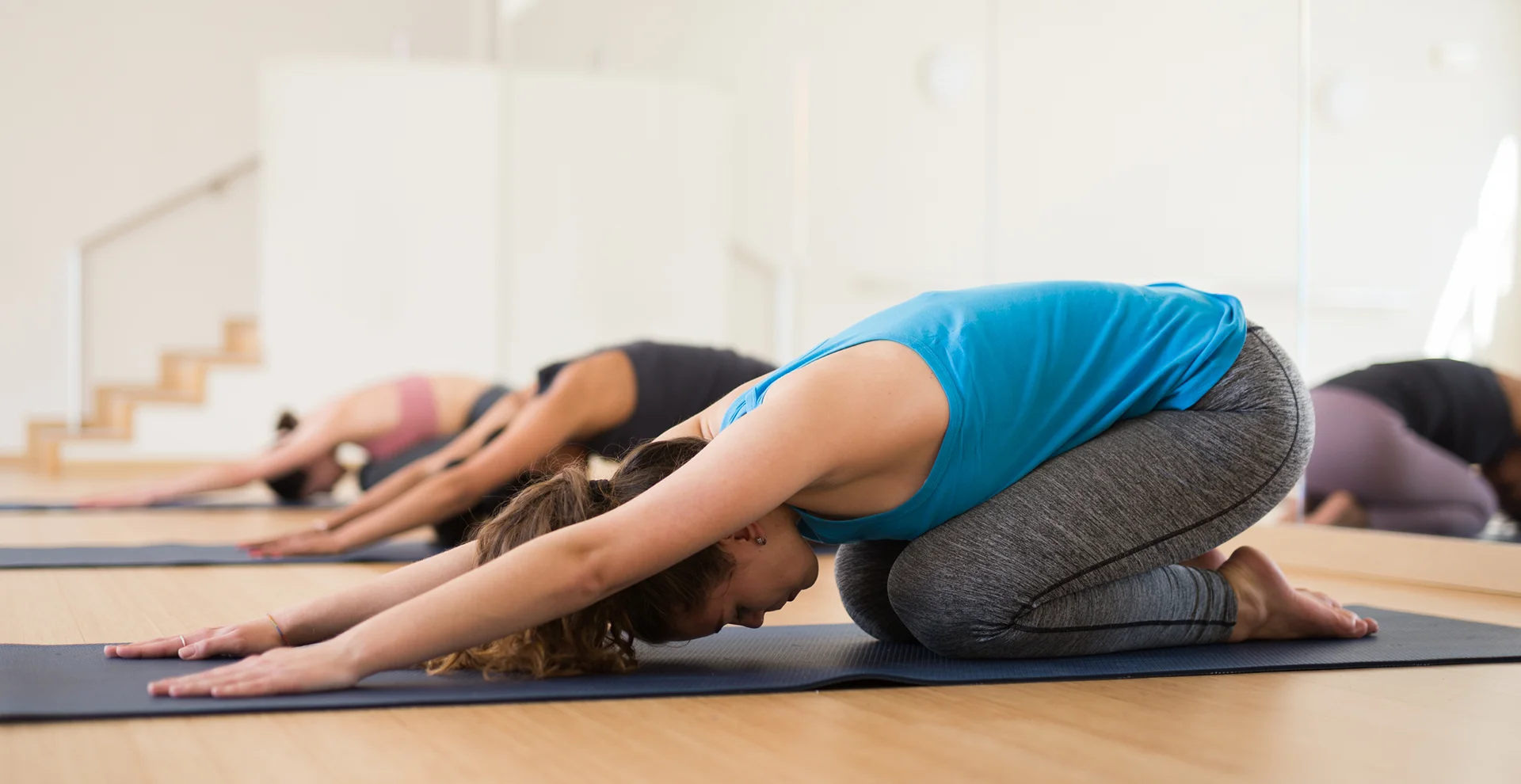If your lower back has been screaming lately every time you bend to scrub the tub or unload the dishwasher, you need relief – fast. Before shelling out for expensive physical therapy or pain meds, try simple stretches you can do in the comfort of your own home. Just a few minutes a day could have you moving pain-free again.
In this comprehensive guide, we’ll explore how certain stretches can help relieve lower back pain and improve spinal health. You’ll learn:
- What causes lower back pain and who’s most at risk
- The benefits of stretching vs. other treatments
- The most effective stretches to target different muscles
- When to do stretches for prevention vs. fast relief
- Proper stretching techniques and safety tips
- Lifestyle changes to complement a stretching routine
So unroll your yoga mat or clear a space on the floor and get ready to gently lengthen your back while easing pain and discomfort – one stretch at a time!
What Triggers Lower Back Pain and Who’s Most Affected?
Before jumping into stretches, let’s quickly understand what causes lower back pain and who’s most likely to experience it.
Exploring the Lower Back’s Structure
Your lower back contains the lumbar region of your spine. This includes parts such as the:
| Anatomy of the Lower Back | Description |
| Lumbar vertebrae | The five vertebrae between your ribs and pelvis. |
| Intervertebral discs | Pads between the vertebrae that absorb shock. |
| Nerves | Branch off the spinal cord; control sensation and movement. |
| Muscles | To be specific, the erector spinae, multifidus, and hip flexors. |
| Ligaments and tendons | Fibrous tissues that connect bones, muscles, and organs. |
The Usual Suspects of Lower Back Pain
- Muscle or ligament strain from overuse, improper lifting, or poor posture.
- Herniated (slipped) disc pressing on a nerve.
- Spinal stenosis – narrowing of the spinal canal.
- Spondylolisthesis – a vertebra slipping out of alignment.
- Spine conditions like scoliosis or arthritis.
Pregnancy stress on the lower back.
Who Gets Lower Back Pain?
- Adults over 30 years of age.
- People with physically demanding jobs.
- Those with weaker core muscles, overweight, or obese.
- Smokers
- People with poor posture from prolonged sitting.
- Women – especially during pregnancy.
- Patients with health conditions like arthritis.
As you can see, lower back pain can stem from damage to any of the structures in the lumbar region. While it affects individuals of all ages, the risk rises once a person becomes over 30 years old, especially when age-related changes to the spine occur.
Now let’s review why stretching is an effective way to prevent and reduce lower back pain.
The Magic of Stretches for Lower Back Pain Relief
Stretching offers many benefits that specifically target the underlying causes of lower back pain. Regular stretching can help:
- Lengthen tight hamstrings, hip flexors, and back muscles
- Improve mobility and flexibility of the spine
- Release muscle knots or spasms
- Relieve pinched nerves
- Restore proper posture and spinal alignment
- Strengthen core and back muscles
- Prevent future injuries and pain
How does stretching compare to other common lower back pain treatments?
vs. Medication
Medications like NSAIDs or muscle relaxants can temporarily reduce inflammation or pain. However, stretches provide more lasting relief by addressing the root causes like inflexibility or weakness.
vs. Physical Therapy
Physical therapists often prescribe specific stretches and exercises. But you can also do general stretches at home as prevention or to supplement PT.
vs. Surgery
Surgery like spinal fusion may be needed in severe cases, but stretching is non-invasive and safer for moderate pain.
Multiple studies have confirmed stretching’s benefits for various types of lower back pain. In one report, simple hamstring stretches done several times a week substantially decreased lower back pain related to sitting.
Now let’s review some of the best stretches to target different back muscles and problem areas.
Which Stretches Fit Your Lower Back Pain?

Not all stretches are created equal when it comes to lower back pain relief. Certain stretches are better for:
- Realigning the pelvis and spine
- Increasing flexibility in the hips and hamstrings
- Relaxing tight lower back muscles
- Strengthening core muscles for stability
Always listen to your body and don’t push into painful ranges of motion. Here are some of the most universally helpful stretches to incorporate:
1. Knees to Chest
This mildly inverted stretch takes the pressure off your lower back while gently separating the vertebrae.
– Lie on your back and pull both knees up to your chest.
– Wrap your arms under your knees and breathe deeply for 30 seconds.
– Repeat 2-3 times, pulling the knees slightly closer to your chest each time.
Modify as needed based on comfort.
2. Cat-Cow Pose
This stretch is gentle and suitable for most people with back pain. Moving between these two yoga poses aligns the spine and releases lower back muscles.
– Get on all fours with a flat back and your shoulders over your wrists.
– On an inhale, arch your back and lift your chest forward into a cow pose.
– On an exhale, round your back up into a cat pose.
– Repeat 10 times flowing smoothly between the poses.
3. Child’s Pose
This kneeling posture gently stretches the shoulders, torso, hips, thighs, and ankles while relaxing the lower back.
– Kneel with your knees together and toes pointing out behind you.
– Sit your hips back over your knees as you lower your chest between your thighs.
– Reach your arms forward fully extended or leave them back alongside your body.
– Hold for 30 seconds, focusing on your breath.
4. Seated Spinal Twist
Twisting lengthens the lower back muscles and increases the mobility of the spine.
– Sit upright with both legs straight out in front.
– Cross your left foot over your right knee.
– Twist your upper body to the left, using your right hand on the chair behind you for leverage.
– Turn your head and look over your left shoulder. Hold for 30 seconds then switch sides.
Go slowly and stop if you feel pain.
5. Kneeling Lunge
The kneeling lunge simultaneously stretches your hip flexors, inner thighs, and spine. This targets tight hips that can contribute to back pain.
– From a kneeling position, place your left foot forward with your knee bent at 90 degrees.
– Ensure your left knee is above your ankle. Keep your back straight.
– Lean your hips forward until you feel a deep stretch in your right hip. Hold for 30 seconds.
– Repeat on the other side. Use cushions under your knees for comfort.
6. Bridge Pose
The bridge strengthens your back, glutes, and hamstrings while decompressing the spine. A caveat, though: Avoid this if you have disc issues!
– Lie on your back with knees bent and arms at your sides.
– Raise your hips up into a straight line from knees to shoulders.
– Hold the pose for 30 seconds, squeezing your glutes.
– Release with control then repeat.
Aim to hold stretches for at least 30 seconds. Moreover, modify poses to your current flexibility level. A little regular stretching goes a long way toward preventing and reducing lower back discomfort!
The Best Times to Do Stretches for Lower Back Pain
Timing is everything when it comes to stretching for back pain relief. Follow these tips for knowing when to stretch:
For Prevention
Doing stretches first thing in the morning helps “limber up” your back after lying still all night. Stretching in the evening relaxes muscles that tighten up from daily activities.
Aim to stretch your lower back a minimum of twice per day. This regular practice keeps muscles flexible and prevents pain-causing imbalances.
For Fast Relief
The best time to stretch for immediate lower back pain relief is after prolonged sitting or strenuous activity.
For example, do a quick stretching sequence after a long car ride. Or cool down with light stretches following yard work or heavy lifting.
Stretching boosts blood circulation, easing back muscle stiffness, soreness, and spasms.
Before & After Exercise
Be sure to include lower back stretches in your warm-up before any workout. This prepares the muscles and prevents injury.
Follow exercise with more thorough stretching to aid muscle recovery. The optimal window for increasing flexibility is within 30 minutes of finishing your session.
How Long to Hold Stretches
To relax muscles and increase flexibility, hold stretches for a minimum of 30 seconds.
When recovering from acute back spasms or herniated discs, only stretch to the point of light tension. Hold for 15-20 seconds to avoid overstretching the affected muscles.
How to Perform Lower Back Stretches Safely and Effectively
Stretching correctly ensures you achieve benefits while avoiding further injury. Follow these form tips:
Maintain Good Posture
Keep proper spinal alignment with your head over your shoulders and a neutral pelvis. Avoid rounded shoulders or excessive arching.
Engage Your Core
Draw your navel in toward your spine to activate your deep abdominal muscles. Keep your core engaged throughout each stretch.
Relax Into The Stretch
Ease into each stretch gently. Don’t force your body into painful ranges of motion. Relax and breathe slowly as you feel the muscles gradually release.
Avoid Bouncing
Hold stretches in a static position. Bouncing or jerky movements can overstretch muscles and cause microtears.
Use Props If Needed
Yoga blocks, straps, or a pillow can provide extra support in challenging stretches. This prevents overexertion of tender areas.
Target The Right Muscles
If a stretch causes pain in surrounding muscles, adjust your alignment. Stretch only as far as keeping tension focused on the intended target area.
Modify For Your Flexibility
Listen to your body. Pull back if a stretch causes sharp pain. Or use a prop to gently increase the intensity once you’re warmed up.
In addition to good form, optimize your stretching with full-body warm-ups and by integrating both dynamic and static techniques.
Other Nifty Tips for Managing Lower Back Pain With Stretches
While stretching is extremely beneficial for lower back health, also consider these lifestyle factors:
Improve Ergonomics
Poor posture during daily activities like sitting at a computer or driving can exacerbate back pain. Use ergonomic chairs, monitor heights, and lumbar support.
Manage Your Weight
Excess weight puts added pressure on the spine. Losing weight through healthy eating can significantly reduce back pain.
Reduce Stress
Chronic stress causes muscle tension in the back to accumulate. Try relaxation practices like yoga, deep breathing, or meditation.
Exercise Your Core
Weak core muscles contribute to back injuries. Include moves like planks and bridges to build core stability.
Consider Physical Therapy
If your pain persists, see a physical therapist for specialized stretching and strengthening exercises.
Lift Properly
Use good form and your legs – not your back – when lifting heavy objects. Avoid twisting while lifting.
Know When To See A Doctor
Consult your physician if you experience sudden severe back pain, numbness/tingling, or loss of bowel/bladder control. These can indicate nerve damage or a serious underlying condition requiring prompt medical attention.
Be patient when performing lower back stretches for pain prevention or relief. It may take several weeks of consistent stretching to see significant lasting results. But sticking with a routine helps retrain posture, release tightness, and strengthen the muscles supporting your spine for healthier, pain-free movement.
Stretch Your Way to a Stronger, Pain-Free Lower Back

Lower back pain can really put a cramp in your daily lifestyle. But as you learned in this article, stretching provides a simple yet powerful way to address the root causes of back discomfort.
By incorporating a mix of stretches that target tightness in your hips, hamstrings, and back muscles, you can realign your spine, improve mobility, release muscle knots, and reinforce proper posture. Therefore, be consistent – aim to stretch morning, evening, and before and after any activity that aggravates your back.
Want to broaden your options? Visit Kaly.com to find top-rated family physicians in your area. With Kaly, you can read verified patient reviews, virtually meet doctors, and book online appointments – including telemedicine visits – to get personalized treatment plans and exercises tailored to your needs.
Why live with lower back pain when simple stretching can offer so much relief? Get started on the path to better back health today!
